 In my previous discussion on how I came to shoot with Minolta, I explained how I started toting my dad’s old Wirgin stereo camera until I out grew it’s capabilities. I was taking an advanced darkroom class and my mentor suggested I pick up a nice Pentax.
In my previous discussion on how I came to shoot with Minolta, I explained how I started toting my dad’s old Wirgin stereo camera until I out grew it’s capabilities. I was taking an advanced darkroom class and my mentor suggested I pick up a nice Pentax.
On his suggestion, I headed off to Adray’s intending to buy a Pentax SLR. In those days, Adray Appliance in Dearborn was THE place to buy camera equipment in the suburban Detroit area. There were some other good camera stores in downtown Detroit, but Adray’s owned the western Detroit suburban camera market. The only place I saw that offered better camera selection and prices in that era was New York City. And Adray’s approached even that.
It took me less than thirty seconds to determine I wanted nothing to do with the Pentax SLRs. The tiny pentaprism looked like a toy to my eyes and the whole feel of the camera seemed toy-like. Even worse, at that time Pentax had yet to offer their K-bayonet mount. The idea of a screw-mount SLR camera just didn’t fit my idea of a serious camera for travel and adventure. I knew I would be doing a lot of shooting in the outdoors, in wilderness conditions. Cross-threading or getting sand and dirt in the screw-mount threads seemed inevitable with the use I had planned.
My new friend behind the counter, sensing a sale, suggested a Nikon — I don’t remember the model. Now, many Nikon owners are known to be fanatical about their cameras, feeling that Nikon is a step above anything else. If you are one of those, why not do us both a favor and stop reading right about now. You probably don’t want to hear what I have to say.
I hated that Nikon. It was bulky and square-cornered and heavy as a brick. In fact that was it felt like — a brick with a flat pentaprism and a lens stuck to it. On top of that, my sales friend explained that I would have stop down the lens to meter correctly. To be fair, Nikon has produced some excellent cameras and their current crop of dSLRs seem to have excellent ergonomics. Too bad the current engineers weren’t around in that era to prevent Nikon from producing bricks. Maybe I would have gone with a Nikon back then. As it was, I knew i would never be happy with that Nikon.
I asked my sales-friend what else he had. “Well, there is the new Minolta SRT102,” he replied. He handed me the demo model and that was all he had to do to make the sale. Unlike the Nikon, the 102 felt good in my hands. The controls were extremely well laid-out, and the view finder was bright and clear, No stop-down metering here. The SRT102 could meter at full aperture.
In all, I felt the Nikon was an old farm truck, while the SRT102 was a sports car. I was sold. “Write it up,” I told the counter guy.
Amusingly enough I recently read the comments of a Nikon lover who claimed that the Minolta SRT series was ergonomically flawed compared to Nikon because the meter on/off switch was on the bottom of the camera. I would certainly prefer living with the SRT’s bottom mounted meter switch over the bulky, sharp-cornered Nikon any day. The only time the bottom switch caused any problem was when the camera was on a tripod or equipped with a flash bar that attached to the tripod socket. In these cases, the meter switch could be inaccessible. Even this was never much of a problem, primarily because the SRT102 was an all manual camera with a mechanical shutter. This meant the only thing the battery had to do was power the meter, so there was little battery drain. My usual procedure was to turn the meter on when I first brought the camera out of the case. I would then leave it on for as long as the shoot lasted — which might be all day when I covered major racing events. Then I would turn off the meter when I put the camera away for the day. Following this procedure, I usually replaced the battery once a year — whether it needed to be or not. Hardly seems to be much of an ergonomic problem — especially when the rest of the camera handled so well.
Unlike today, it wasn’t all that common to own a SLR in that era. To be sure, many amateurs and well-to-do folks owned SLRs and range-finders but it was much less common than today. The Minolta SRT and the rest of the offerings of that era were metal bodied cameras with mechanical shutters. In another decade, plastic bodies and less-expensive microchip controlled shutters would allow camera makers to slash the price of a SLR to the extent that they were affordable by even casual users. Today, you’ll find dSLRs in the hands of casual shooters as well. In the early seventies, SLRs were priced beyond the reach of most people. Even among those who could afford the sticker price, the idea of spending “that” much cash on a camera just didn’t seem practical.
There was second reason the average Joe (or Jill) avoided SLR cameras. They were perceived as difficult to operate — requiring a skilled expert to use properly. Only trained photographers knew how to operate a SLR. Of course this was a myth — early seventies SLRs were far easier to use than the dSLRs of today. But today’s cameras have auto exposure, auto focus, auto ISO (ASA back in the seventies), auto white-balances, auto x-ray vision. Okay, I made the last one up, but you get the idea. The older manual SLRs didn’t really require a PHD in Photographic Studies to operate — but many people assumed they did.
I remember the time I was photographing an auto race for a national publication. One of the racers that I knew casually approached me about some photo work he needed, He looked over my SRT102 equipped with a side grip flash and external battery pack. Shaking his head, he exclaimed “Man, how did you ever learn what all those dials and buttons are for? I couldn’t even begin to know how to use that thing!”
The hilarious thing was, this same man built racing engines for a living. Here was someone who understood all the intricate details of assembling a race engine to the finest tolerances and how to tune it to get the maximum power — yet he assumed my SLR was too difficult for him to use!
The SRT series was simple to use and required far less thumbing through the owner’s manual then any auto-everything film or digital SLR available today. Yet the older cameras were thought to be difficult to use, while almost anyone assumes they can use a dSLR. After all dSLRs are “automatic.”
I guess that’s what you call progress.
I’ll talk more about the SRT102 in the next post. Until then, stay focused! — Tom
Have comment on this post? Let me know what you think!
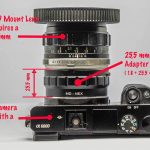
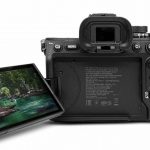
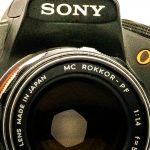


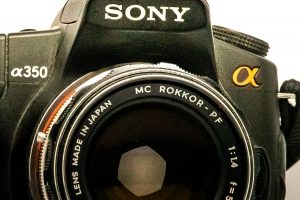
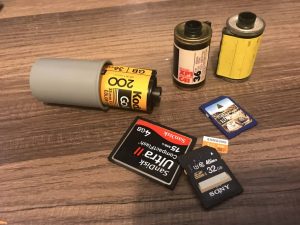
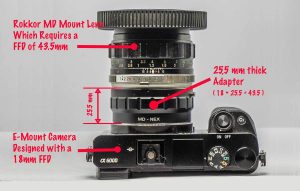


I have recently inherited a srt 102 and need a lot more information about it.
I just upgraded from an SRT-101 to a 303 (102), I was after the split microprism and aperture readout. I don’t think cameras need to get any better than this. So cheap, so solid.
I still have Srt 102 and like it better than any since. It still works, the only problem is finding the proper battery.
I bought a SLR102 and simply love it. It is really not as diddficult as one might thought it is to operate it. Pictures are beautiful thought I’m just having fun. I love this tank and it’s so reasonably price.
Lately I bought a SLR303B and a lower end (but in mint condition SRT100X Budget Moldel)…and I love those Rokor Lenses..
Great Camera and The Best Value For Money Camera around I would say.
Cheers !
I have the 102 as well and what is the push button on the bottom right for.
I have the 102 as well and what is the push button on the bottom right face for.
VERY COOL STATEMENT YOU HAVE THERE…. 🙂
IAM 100% AGREED… 🙂
I have few kind of MINOLTA SRT… Every kind of MINOLTA SRT is definitely SUPERIOR…
See You Around…
I’ve never given this a try, but I think it’s about time I do.
Ive been using SRT’s exclusively for a while now. Put up with more abuse then any other ive owned. I carry a 102 as my primary with a 101 body as a backup and secondary. I recently gave up the rest of my digital photography in favor of these “thinking mans” cameras. I get as many great shots from 4 rolls as from 4 gigs in my digi. After waiting for so long for digital to arrive in force Ive gone back, regressed some of my friends say. Ill be sticking with my srt102 for quite some time.
Ive been using SRT’s exclusively for a while now. Put up with more abuse then any other ive owned. I carry a 102 as my primary with a 101 body as a backup and secondary. I recently gave up the rest of my digital photography in favor of these “thinking mans” cameras. I get as many great shots from 4 rolls as from 4 gigs in my digi. After waiting for so long for digital to arrive in force Ive gone back, regressed some of my friends say. Ill be sticking with my srt102 for quite some time.
The button on the bottom is the release for the film rewind.
You can download a user manual at konica-minolta.com – get it while it’s there.
I bought an SRT 102 in 1975, went to Korea came back with a stop in Japan and bought a wide angle and telephoto. I took many shots with this camera and hand held a night shot, yep like being in the war again take a breath and hold and squeeze, but they turned out fine.
Fast forward to 2009, the leather case is shot, the camera and lenses needs cleaning, who does that or can I acquire something myself from a store?
I bought my first real camera in 1973 and it was a minolta slr 101. I loved it and did black and white photos( of course) with it. Somehow it disappeared as my 20’s moved on, most likely I gave it away, as I inherited my mother’s mania for giving away everything she owned.
When I hit 32 ,I bought a used minolta 102 , which I still have and I have spent over a hundred dollars having it repaired . It was my only camera until I bought a digital in 2007. I miss black and white darkroom work.
ps Do you happen to know what battery my minolta uses as it just went dead?